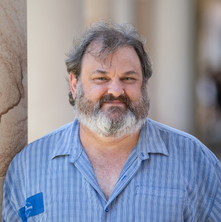The nuclear growth hormone receptor- its actions and mechanism of nuclear translocation (2007-2009)
Abstract
We and others have found that cell surface receptors for growth factors such as EGF, FGF and growth hormone can be found in the nucleus of proliferating cells. We have shown that many cancers have elevated nuclear GH receptor including leukemia, breast and colon cancer. If we artificially target the GH receptor to the nucleus, the resulting cells are tumorigenic when injected into immunocompromised mice, rapidly form ing metastasising tumours. To create more effective inhibitors of this tumourogenesis, and to define the physiological roles of nuclear GH receptor, we will define the transport process which carries the receptor to the nucleus and block it. We will also seek to define how the receptor in the nucleus interacts directly with DNA to inhibit programmed cell death. To carry out these projects we will use sophisticated proteomics /mass spectrometry to identify the proteins interacting with the receptor in the transport and gene activation processes. The role of candidates will be tested by preventing their expression or by direct inhibition of their action using drugs or dominant negative versions. These approaches will provide leads to new anti-cancer therapeutics, and therapies for blocking diabetic blindness and kidney failure.


